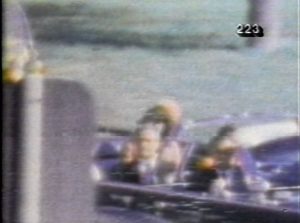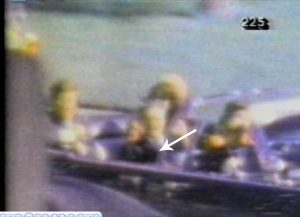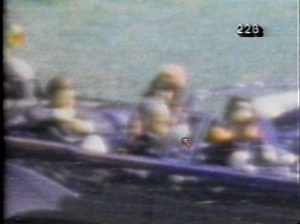It’s about what I call “witness dynamics,” one element of which is, if we don’t know what to look for, we won’t look for it; and if we don’t look for it, we won’t see it.
In forensic evidence, I can think of no more classic example than what is probably the most heavily “witnessed” homicide in human history: the assassination of President John Kennedy in Dallas on November 22, 1963. Countless millions of people have seen Abraham Zapruder’s film of Kennedy’s death, taken with an 8mm Bell & Howell home movie camera that was running 18 frames per second and change.
And most of those people believed they saw Kennedy grab his throat, and Governor Connally in front of him slump forward sometime thereafter, convincing them of the “impossible magic bullet theory” and that the two men couldn’t possibly have been hit by the same bullet, as the Warren Commission concluded.
Trouble was, they were wrong, and the next time you watch the Zapruder film you’ll see that the evidence does in fact indicate a single bullet. First, Kennedy never grabs his throat. His arms and hands curl up in what Dr. John Lattimer may have been the first to recognize as Thorburn’s Reflex, a neurological response to trauma to the spinal chord in the area of the sixth cervical vertebra; autopsy showed a displacement of C6 that would have impinged at exactly that point. In the exact same frame, we see Connally’s right suitcoat lapel blow outward – forward, into the wind coming into the moving, open-top limousine – at exactly the spot where physicians at Parkland discovered a bullet had exited his chest. The same bullet then strikes Connally’s right wrist, causing a radial nerve reaction that flips into the air the white Stetson hat he has been holding in that hand.
Screen captures are below, courtesy of an enhanced version of the Zapruder film courtesy of Dr. Michael West and sharp-eyed journalist Johann Rush, who was the first to spot the hat flip many, many years after the Zapruder film’s release to the public. (The flip of the Governor’s lapel, to my knowledge, was first spotted by Failure Analysis Associates, also many years after both the 1963 incident and the 1967 public release of the film.) The small arrow indicating JFK’s hands going into the Thorburn’s Reflex are from West and Rush, while the large arrows indicating hat flip and lapel flip were put in for this blog entry.
Though it appears that the Warren Commission didn’t spot these two details either – because they didn’t look for them – these two evidentiary points indicate that they were right about a single bullet going through Kennedy’s neck, and Connally’s chest and right wrist/forearm area, stopping in Connally’s leg.
The learning points once again: IF WE DON’T KNOW WHAT TO LOOK FOR, WE WON’T LOOK FOR IT, AND IF WE DON’T LOOK FOR IT, WE WON’T SEE IT. This can result in us seeing something we were told to see…instead of what actually happened.
The limo emerges from behind billboard in frame 223. Governor Connally is facing the camera, Jacqueline Kennedy directly behind him.
At frame 225, President Kennedy, left, goes into Thorburn’s Reflex, hands and forearms rising. Large arrow shows Governor Connally’s right lapel, flat against his chest in frame 223, now blowing outward at the point where a bullet exit wound was found in his chest.
As the President’s hands continue to rise, watch the Governor’s white hat.
Small arrow courtesy researchers Johann Rush and Michael West shows hat flipping upward, consistent with reflex from gunshot wound to radial nerve area, in frame 228. Camera was running slightly faster than 18 frames per second.





